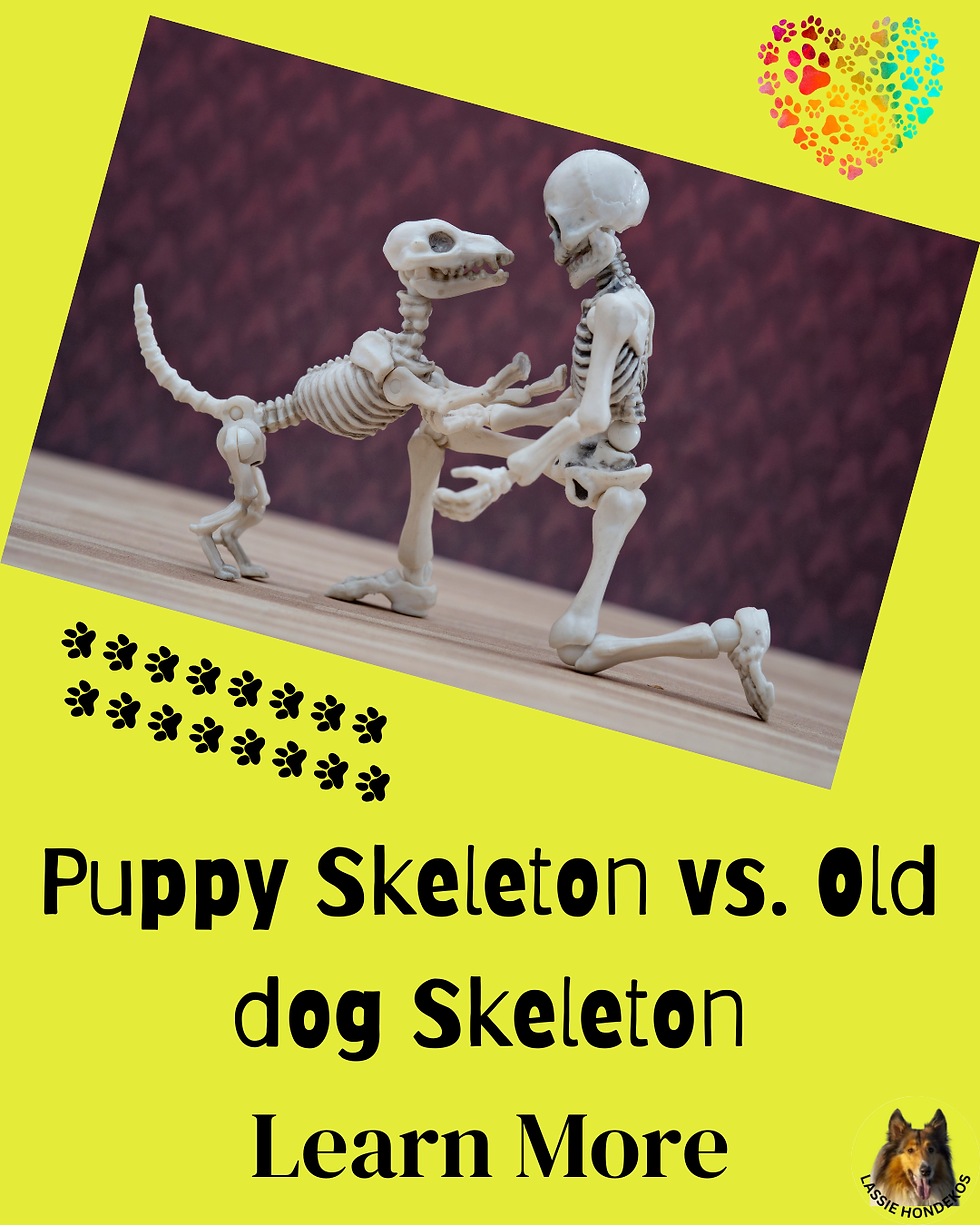Puppy Skeleton vs. Old dog Skeleton
- Johan De Klerk
- Jun 25, 2024
- 2 min read

A Comparative Analysis of the Skeleton of a Puppy and an Older Dog
Introduction:
Dogs, like all living beings, undergo significant changes as they grow and age. One of the most critical transformations occurs in their skeletal system, which serves as the foundation for their overall structure and movement. This essay will delve into the differences between the skeleton of a puppy and an older dog, exploring the developmental stages and age-related changes that occur in their skeletal system.
Puppy Skeleton (0-12 months):
At birth, a puppy's skeleton is primarily composed of cartilage, which gradually ossifies (hardens) into bone tissue. This process is crucial for the development of a sturdy skeletal framework. Puppies have:
- Softer, more pliable bones
- Open growth plates (epiphyseal plates) for continuous growth
- A larger proportion of cartilage to bone tissue
- A more flexible spine and joints
As puppies grow, their bones rapidly develop and mature, reaching approximately 75% of their adult size by six months. The remaining 25% of growth occurs between six months and one year.
Older Dog Skeleton (5+ years):
As dogs age, their skeletal system undergoes significant changes, including:
- Increased bone density and rigidity
- Closed growth plates, indicating the end of rapid growth
- A higher proportion of bone tissue to cartilage
- A more stable and less flexible spine and joints
In older dogs, the skeletal system may also exhibit signs of wear and tear, such as:
- Arthritis and joint degeneration
- Bone spurs and osteophytes (bony growths)
- Reduced bone density (osteoporosis)
Comparison and Conclusion:
The skeleton of a puppy and an older dog exhibit distinct differences, reflecting the dynamic changes that occur during growth and aging. Puppies have a more flexible and rapidly developing skeletal system, while older dogs have a more rigid and mature framework. Understanding these differences is essential for:
- Proper feeding and nutrition
- Adequate exercise and training
- Identification and management of age-related skeletal issues
By recognizing the unique characteristics of a puppy's and older dog's skeleton, we can better care for our canine companions and promote their overall health and well-being.



Comments